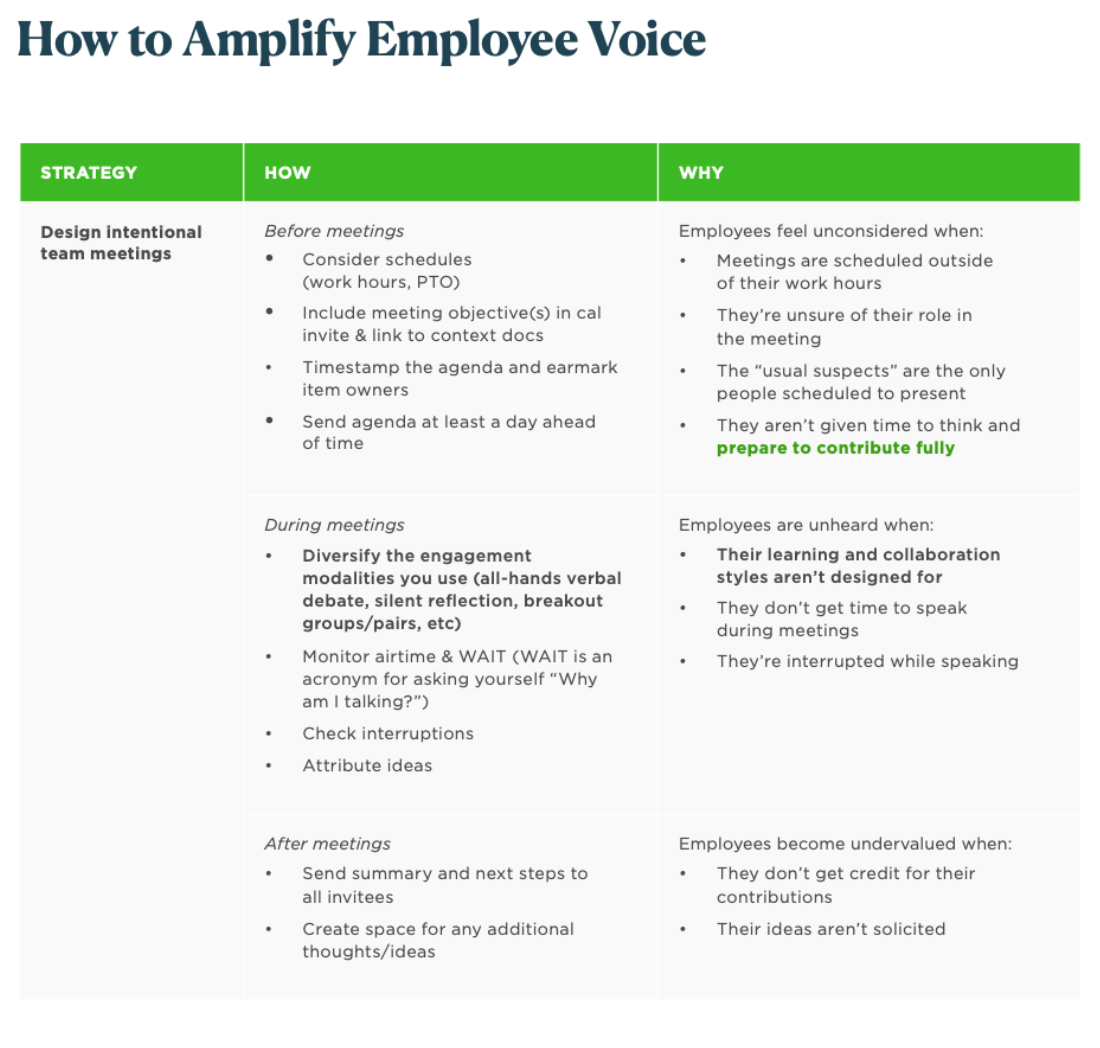How to Amplify Employee Voice
Managers are responsible for cultivating belonging on their teams—which includes amplifying employee voice.

As a manager, you are responsible for cultivating belonging on your team.
Belonging is a feeling—the extent to which employees can show up to work fully without having to sacrifice meaningful aspects of their identity. We care about belonging because it benefits individuals, teams and our company: When it feels good to come to work, employees are more committed to you, your team and our company. When we free up employees’ discretionary effort to do the job they were hired to (vs. spending calories on trying to manage others’ impressions of them), employees are more productive. When we unlock the uniqueness of each individual, we surface diverse perspectives and collective intelligence that fuel innovation.
Belonging tends to break down at key junctions in the employee experience, as outlined HERE. To prevent “belonging breakdowns,” we expect all managers to amplify employee voice. Voice refers to an employee’s participation in and influence on decisions.
Below are strategies for amplifying voice in
- collaborative settings
- 1:1 interactions with your direct reports
- when sharing decisions
These strategies build foundations that are essential before having more explicit conversations with your employees about their identities. (If you are preparing to discuss an urgent DIBs-related topic, please reference this tip sheet for additional pointers. These tips are applicable to a vast array of time-sensitive events that impact social identities.)






.png)
.png)
.png)
.png)
.png)



.svg)
.svg)






















